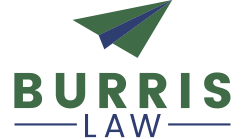Machine learning (ML) and artificial intelligence (AI) are becoming ubiquitous in various technical disciplines, such as automotive technologies, semiconductor fabrication systems, Industry 4.0, medical diagnostic systems, image and speech recognition, and predictive analytics. Moreover, the number of public AI patent applications has increased by more than 50% since 2012, which demonstrates a desire to protect the rapid developments and advancements in the AI and ML space.
While much of the legal literature and caselaw provide guidance for drafting patent AI and ML applications to mitigate the pitfalls associated with the subject matter eligibility statute (35 U.S.C. § 101), there is little guidance for preparing AI and ML applications to comply with specification requirements (35 U.S.C. § 112(a)).
In fact, the Federal Circuit has yet to address 35 U.S.C. § 112(a) in the context of AI and ML. Furthermore, the USPTO solicited comments and feedback from the public in August 2019 regarding AI inventions and whether description concerns that are unique to AI inventions are present (84 Fed. Reg. 44889). The request for comments ultimately resulted in varying responses.
Accordingly, inventors and patent practitioners should prepare ML and AI patent applications with the requisite foresight to avoid potential enforcement pitfalls. This article provides tips for drafting AI and ML patent applications to insulate applicants from specification challenges at the USPTO and during enforcement.
SPECIFICATION PRECEDENT IS APPLICABLE TO AI AND ML INVENTIONS
35 U.S.C. § 112(a) contains a written description requirement, an enablement requirement, and a best mode requirement.
The written description requirement generally requires the specification to demonstrate that “the inventor actually invented the [claimed] invention”[1] or demonstrate that the patentee was in possession of the invention that is claimed. The specification should provide a sufficient description of the invention and not merely describe “a desired result.”[2]
The enablement requirement requires the specification to convey to one skilled in the art how to “make or use the invention … coupled with information known in the art without undue experimentation.”[3] Factors for determining undue experimentation include: (i) the quantity of necessary experimentation, (ii) the amount of direction or guidance presented, (iii) the presence or absence of working examples, (iv) the nature of the invention, (v) the state of the prior art, (vi) the relative skill of those in the art, (vii) the predictability or unpredictability of the art, and (viii) the breadth of the claims.[4]
The best mode requirement requires the specification to include the best mode of carrying out the invention.[5]
TIPS FOR COMPLYING WITH 35 U.S.C. § 112(A)
1. Identify Novel Feature of ML and AI Invention
While this tip is important for all inventions, AI and ML inventions may call for additional insight from the patent practitioner and the inventors to avoid written description pitfalls.
For example, does the novelty lie in processing the data before training the system (e.g., blurring images to remove redundant/unnecessary details)?
Does the novelty lie in the input mapping or the training process?
Does the novelty lie in the type of learning (e.g., unsupervised, supervised, reinforcement, etc.), the model (e.g., classification model, regression model, etc.), or the architecture of the AI/ML system (e.g., a unique arrangement of the layers)?
Does the novelty lie in the output processing of the AI/ML system?
These are questions that patent practitioners and inventors should identify when preparing invention disclosures, claims, and the specification to avoid written description issues.
2. Draft the AI/ML Features of the Invention with the Appropriate Specificity
When the patent practitioner identifies the novel features and drafts the claims based on the identified novel features, it is generally beneficial to provide the appropriate level of detail for each portion of the AI/ML system. For example, the novelty of the AI/ML system may include utilizing a region-based convolutional neural network (R-CNN) to detect and classify an object. Accordingly, specific examples describing the layers of the R-CNN and how the resulting bounding boxes are processed and generic examples illustrating the data processing and training algorithms performed will help insulate the patentee from written description challenges.
Additionally, providing the appropriate level of specificity will help patent practitioners to not get “lost in the weeds” when describing ancillary features of the invention, thereby potentially reducing attorney fees.
Accordingly, it is important to consult an attorney with experience in machine learning and artificial intelligence to ensure that the specification includes the requisite amount of disclosure. If you have any questions related to this topic, please contact George Patsarikas at george@burrisiplaw.com.
[1] Vas-Cath Inc. v. Mahurkar, 935 F.2d 1555, 1563-64 (Fed. Cir. 1991); Ariad Pharm., Inc. v. Eli Lilly & Co., 598 F.3d 1336, 1351 (Fed. Cir. 2010) (en banc).
[2] Vasudevan Software, Inc. v. MicroStrategy, Inc., 782 F.3d 671, 682 (Fed. Cir. 2015).
[3] United States v. Telectronics, Inc., 857 F.2d 778, 785 (Fed. Cir. 1988).
[4] In re Wands, 858 F.2d 731, 737 (Fed. Cir. 1988).[5] Eli Lilly & Co. v. Barr Labs. Inc., 251 F.3d 955, 963, 58 USPQ2d 1865, 1874 (Fed. Cir. 2001).
